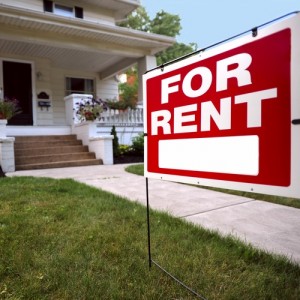Month after month, data comes out affirming the rising demand for rental units, and like the wider world of real estate, fresh and unusual details often accompanies it.
A recent Wall Street Journal piece on the rent/homeownership dichotomy has presented a most interesting example – currently, there are more houses for rent than there are apartment buildings.
Basing its findings on a new study of Census Bureau data by CoreLogic economist Sam Khater, the Journal reported that 20.7 million rentals are in one-to-four unit homes, compared to 17.1 million rentals in building with five or more units – and it’s only going to grow more lopsided as time goes on, with more and more renters opting to remain in single-family homes similar to the ones they lost to foreclosure, according to a Federal Reserve Board study from 2011 (homeownership just hit its lowest level since Gallup began tracking the data in 2011).
“Multifamily construction really boomed in the ‘70s and ‘80s, and single family boomed in the last decade, but that was mostly for owners,” Khater said in the Journal piece. “I do think single-family rentals have been around 50% of the rental market for a while now, but the pendulum has definitely swung towards that part of the market, especially in the hardest-hit areas.”
According to the Journal, stats like this are the “talk of the town” for Wall Street investors because they demonstrate a new, untapped demand for single-family rentals, one that the foreclosure crisis, and the millions of cheap homes it has created, could potentially supply. And the single-family rental market is big – Khater estimated in his analysis that the market is now at $3 trillion, and average yields are at around 8.6 percent
“What large investor wouldn’t want to take a few chances?” the article asks.
The Journal did highlight, though, the often awkward nature of single-family rentals (the units are scattered, the upkeep more nuanced, the costs occasionally higher), and perhaps that explains the rather schizophrenic performance, as of late, for Chicago’s rentals. As RentJuice recently reported, though rents in the Gold Coast, River North and Streeterville neighborhoods all fell by respective amount of 13 percent, 7 percent and 4 percent in the first quarter, rent has remained high in the city’s Loop, increasing by 13 percent. Also, although Ravenswood, Edgewater and Evanston are still relatively affordable alternatives to the city’s more upscale neighborhoods, rents increased there as well by 10, 6 and 3 percent, respectively.
And that rise in rent has been accompanied by falling supply. The availability of studio and one-bedroom units fell by 2 percent in the first quarter, and two-bedroom units comprised less than 9 percent of the first-quarter market.
“The high occupancy rate we’re seeing in the Chicago metro area is a sign that the city’s rental market remains strong,” said RentJuice CEO David Vivero in a press release.
We’ve reported before on rising rents and how, in time, they make homeownership more appealing throughout the city, George Schultz, @properties’ managing broker in Bucktown, said he sees the single-family trend to be more of a “phenomenon,” and one “we won’t see much longer.”
The main motivating factor for the trend, Schultz said, was single-family homeowners who either could not sell their home or were unwilling to sell the property for a depreciated price, and as a result, they opted to maintain ownership of the residence but offer it as a rental unit. And how in-demand rental units have been in Chicago as of late, those units were rented out almost immediately.
In 2012, though, Schultz said that pattern has decidedly dropped, as pending sales in his area, especially for high quality, well-maintained homes, have risen dramatically. As he phrased it, “Good inventory, priced correctly, is selling,” and the single-family rental phenomenon will decrease as more homeowners become comfortable with selling their units.
